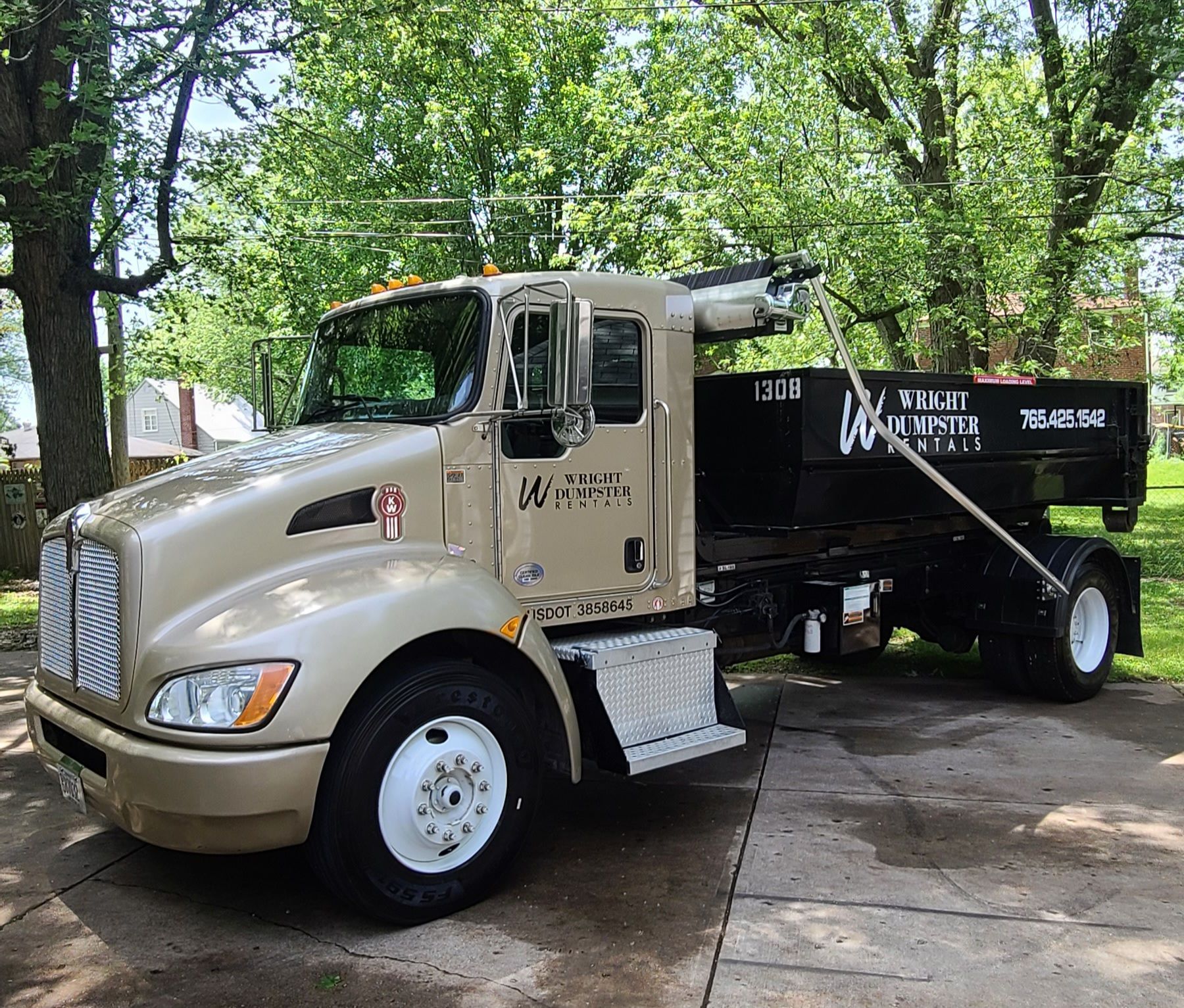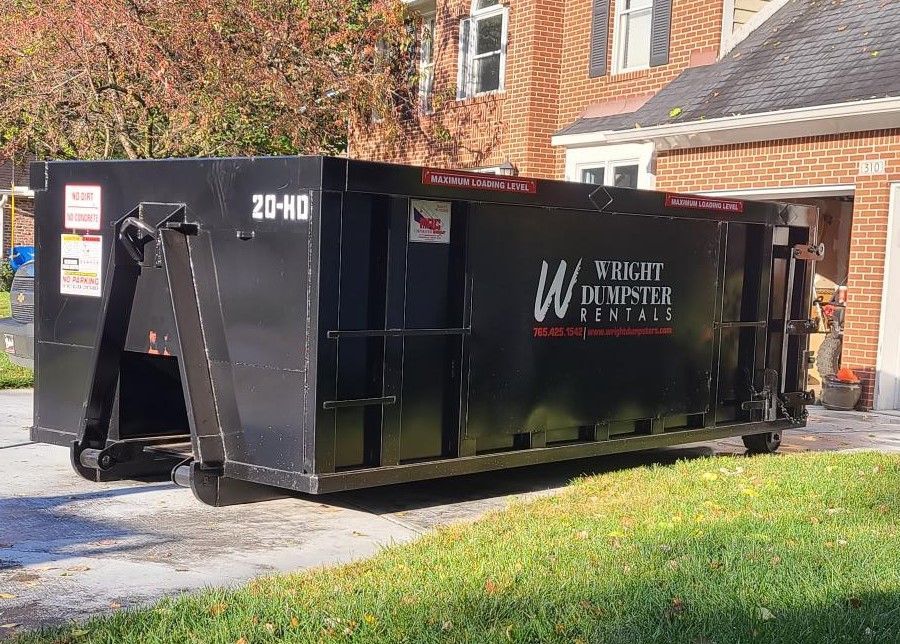Managing Hazardous Materials From Your Renovation in Central Indiana
Embarking on a renovation project is like breathing new life into a space, but amidst the dust and excitement, there's a hidden challenge that demands your attention. Hazardous materials generated during renovation can be lurking in the shadows, posing potential threats if not handled properly.
As you navigate through the labyrinth of renovation tasks, it's crucial to understand the ins and outs of managing these materials to ensure the safety of both your surroundings and the people involved.
So, how can you effectively identify, handle, and dispose of these hazardous materials while maintaining the integrity of your renovation project?
Key Takeaways
- Thorough site assessment and proper identification are crucial for managing hazardous materials during renovation in Central Indiana.
- Sorting and separating hazardous materials from non-hazardous debris is essential to prevent environmental and health risks.
- Compliance with local regulations, using designated waste areas, and following guidelines from regulatory bodies like the Indiana Department of Environmental Management are key to responsible waste management.
- Responsible renovation debris management includes using labeled containers, disposing of hazardous materials at designated facilities, and avoiding improper disposal methods to protect the environment and ensure public health safety.
Identifying Common Hazardous Materials
When renovating homes or businesses in Central Indiana, it's essential to be able to identify common hazardous materials to ensure proper handling and disposal. Identifying hazardous waste in renovations requires a meticulous approach and an understanding of the various materials that may pose a risk.
Common hazardous materials encountered during renovations include lead-based paint, asbestos, mercury-containing devices, and certain types of solvents and adhesives. Lead-based paint is often found in older homes and buildings and can pose serious health risks if not handled properly. Asbestos, commonly used in insulation and other building materials requires special precautions due to its carcinogenic properties.
Mercury-containing devices, such as thermostats and fluorescent light bulbs, must be handled carefully to prevent the release of mercury into the environment. Additionally, solvents and adhesives, often found in flooring and cabinetry, can contain volatile organic compounds (VOCs) that are harmful to both human health and the environment.
To effectively identify these hazardous materials, it's important to conduct a thorough assessment of the renovation site before any work begins. This may involve testing paint for lead, inspecting insulation for asbestos, and identifying any mercury-containing devices or VOC-containing products. By being vigilant in identifying these materials, you can ensure that they're handled and disposed of in compliance with local regulations, protecting both the environment and the health of those involved in the renovation process.

Sorting and Separation Process
To ensure proper management of hazardous materials during renovation projects in Central Indiana, homeowners and contractors must meticulously implement a thorough sorting and separation process for the various types of waste generated. The sorting and separation process is a critical step in managing renovation debris responsibly. It involves identifying, segregating, and categorizing different types of waste to ensure that hazardous materials are separated from non-hazardous ones. This process not only promotes safe handling and storage but also facilitates adherence to local disposal guidelines.
When sorting and separating hazardous from non-hazardous waste, it's essential to be detail-oriented and thorough. Proper identification of materials is crucial to avoid mixing hazardous substances with regular waste, which could lead to potential environmental and health hazards. Additionally, managing renovation debris requires compliance with local regulations, emphasizing the importance of meticulous sorting and separation.
To effectively manage renovation debris, it's important to establish a systematic approach to sorting and separating waste materials. This may involve creating designated areas for different types of waste, using clearly labeled containers, and providing training to ensure that everyone involved understands the importance of proper waste segregation.
Hazardous Vs. Non-Hazardous Materials
When managing hazardous materials from renovation projects, it's crucial to accurately identify which materials are hazardous and which are non-hazardous. Properly disposing of hazardous materials requires adherence to specific guidelines and regulations to ensure the safety of the environment and human health.
Identifying Hazardous Materials
Proper identification of hazardous materials is essential for ensuring the safe and compliant management of renovation waste in Central Indiana. When identifying hazardous materials, it's important to:
- Read Labels: Carefully read product labels and Material Safety Data Sheets (MSDS) to determine if the materials contain hazardous components.
- Check for Common Hazardous Materials: Be aware of common hazardous materials such as lead-based paint, asbestos, mercury-containing devices, and certain types of solvents and adhesives.
- Seek Professional Guidance: When in doubt, seek guidance from environmental agencies, waste management professionals, or hazardous materials consultants for proper identification and handling of potentially hazardous materials.
Proper Disposal Methods
Once you have identified hazardous materials in your renovation waste, it's imperative to meticulously differentiate the proper disposal methods for hazardous and non-hazardous materials to ensure compliance with environmental regulations and safety standards.
Hazardous materials, such as lead-based paints, asbestos-containing materials, and certain solvents, pose significant risks if improperly disposed of. It's crucial to handle these materials with care and dispose of them through approved hazardous waste disposal facilities.
Non-hazardous materials, on the other hand, can often be handled through regular waste disposal services. Failing to differentiate between hazardous and non-hazardous materials during disposal can lead to severe environmental contamination, health hazards, and potential legal consequences.

Safe Disposal Options
To ensure the safe disposal of hazardous materials accumulated during renovation projects in Central Indiana, it's imperative to carefully consider and utilize approved waste management facilities and services. When it comes to safe disposal options for hazardous materials, it's important to prioritize the separation of different types of waste to prevent cross-contamination and ensure proper handling. Here are three crucial safe disposal options to consider:
- Designated Collection Sites: Many counties in Central Indiana offer designated collection sites where you can drop off hazardous materials such as lead-based paint, asbestos, and chemical cleaners. These sites are equipped to handle and dispose of these materials safely, ensuring that they don't pose a risk to the environment or public health.
- Licensed Hazardous Waste Haulers:
Utilizing the services of licensed hazardous waste haulers can provide a convenient and compliant solution for disposing of hazardous materials. These professionals are trained in handling and transporting hazardous waste to approved disposal facilities, ensuring that all regulatory requirements are met.
- Special Waste Disposal Facilities: Certain waste management facilities are specifically designed and licensed to handle hazardous materials. They have the necessary equipment and expertise to manage hazardous waste, including segregation, treatment, and disposal, in accordance with environmental regulations.
Resources in Central Indiana
When it comes to managing hazardous materials from renovation projects in Central Indiana, it's vital to be aware of the local disposal facilities and their specific hazardous waste guidelines.
Understanding the available resources for proper disposal and recycling of hazardous materials is crucial for ensuring compliance with environmental regulations.
Hazardous Waste Guidelines
Amidst the proper disposal of hazardous materials at local facilities in Central Indiana, gaining a comprehensive understanding of the hazardous waste guidelines and resources becomes crucial for ensuring compliance and environmental responsibility during renovation projects.
When dealing with hazardous waste, it's essential to adhere to the specific guidelines set forth by regulatory authorities. Proper labeling, storage, and transportation are key components of these guidelines.
Additionally, familiarizing yourself with the best practices for managing renovation debris, such as separating hazardous materials from non-hazardous ones, is vital. Central Indiana offers valuable resources, including guidance documents, training opportunities, and waste management facilities, to support individuals and businesses in navigating hazardous waste regulations effectively.
Responsible Renovation Debris Management
To manage renovation debris responsibly, it's crucial to recognize, sort, and dispose of hazardous materials properly, ensuring compliance with local regulations and environmental safety. When managing responsible renovation debris, follow these essential steps:
- Recognition: Take the time to identify hazardous materials present in the renovation debris. Look for common hazardous materials such as lead-based paint, asbestos, mercury-containing devices, and various chemicals like solvents, adhesives, and pesticides. Knowing what hazardous materials are present will guide proper handling and disposal.
- Sorting:
Once hazardous materials are recognized, sort them from non-hazardous debris. Use clearly labeled containers to separate materials like paint, batteries, electronics, and other hazardous waste from the rest of the debris. This step prevents cross-contamination and ensures that hazardous materials aren't mistakenly mixed with non-hazardous waste.
- Disposal: After recognizing and sorting hazardous materials, ensure they're disposed of properly. Utilize designated hazardous waste disposal facilities or collection events in your local area. Don't dispose of hazardous materials in standard waste containers or down drains, as this can harm the environment and pose risks to public health.

Compliance With Local Regulations
Are the hazardous materials present in your renovation debris compliant with local regulations in Central Indiana? Sorting hazardous materials from renovation debris is critical to ensuring compliance with local regulations in Central Indiana. By following best practices for sorting, you can identify and separate hazardous materials such as lead-based paint, asbestos, mercury-containing devices, and other potentially harmful substances. This meticulous sorting process is essential for complying with regulations set forth by the Indiana Department of Environmental Management (IDEM) and local authorities.
To comply with regulations, it's important to be thorough in identifying hazardous materials and segregating them from non-hazardous waste. This may involve conducting thorough assessments of the renovation debris to identify any potentially hazardous items. Once identified, these materials should be separated and disposed of in accordance with local regulations. Failure to comply with these regulations can result in severe penalties and harm to the environment.
Additionally, compliance with local regulations extends to the proper disposal of hazardous materials. Following best practices for sorting ensures that hazardous materials are disposed of in a manner that's safe for both the environment and public health. This not only fosters a sense of responsibility within the community but also contributes to a safer and more sustainable living environment for everyone in Central Indiana.
Review
Now that you have the knowledge and tools to manage hazardous materials from your renovation in Central Indiana, you can ensure a safe and compliant project.
By identifying, sorting, and safely disposing of hazardous waste, you can contribute to a healthier environment for your community.
Remember to utilize the resources available and always comply with local regulations to ensure responsible renovation debris management.
Together, we can create a safer and more sustainable Central Indiana.
We offer fast, reliable service and custom-tailored dumpster rentals that make getting rid of junk convenient and affordable. Locally owned and operated, you can depend on Wright Dumpster Rentals to deliver.
All Rights Reserved | Wright Dumpster Rental | Website Designed by Blue Crocus Solutions





